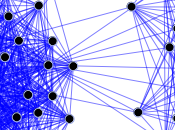All Structuralist theories of crime and deviance seem to suggest that crime is socially constructed rather than focused on the individual.
Albert Cohen, combining Structuralist and sub cultural theories drew on Merton's idea of strain but criticized Merton's ideas of crime being an individual response and believed that he ignored non-utilitarian crimes such as vandalism and joy-riding. Cohen was particularly interested in deviance which was not economically motivated but done simply for the thrill of the act.
Cohen believed that many 'lower-class' boys aspired to the values of 'middle-class' society but lacked the means to obtain anysuch success, thus leading to status frustration. Therefore many reject the rules of acceptable norms and behaviour as they cannot be successful within those rules. They turn to a delinquent subculture, where there are alternative norms and values and through committing crime status can be gained.
Box, however, argues that Cohen's theory only applies to the minority.
Most he believes accept mainstream values although feeling resentful of being seen as failures.
Cloward and Ohlin were also greatly influenced by Merton and accepted his explanation of deviance in terms of the legitimate oppurtunity structure. However they also explored a parallel, the illegitimate oppurtunity structure. They realised that within certain subcultures it was possible to make a career out of crime, which allowed criminals to obtain mainstream societies goals. According to Cloward and Ohlin there were three possible categories. Firstly a criminal subculture, where there is oppurtunity to become involved in a thriving world of crime, where there are successful role models who have used crime as a means to succeed, and youngsters who can 'work their way up the ladder' in the criminal hierarchy. Where there is no local criminal subculture, conflict subculture can emerge. This is when there is no access to the...



Hmm
Although a bit short, good job on explaining Sociology:Outline and assess Structuralist theories of crime and deviance.
Thanks Kevin
2 out of 2 people found this comment useful.